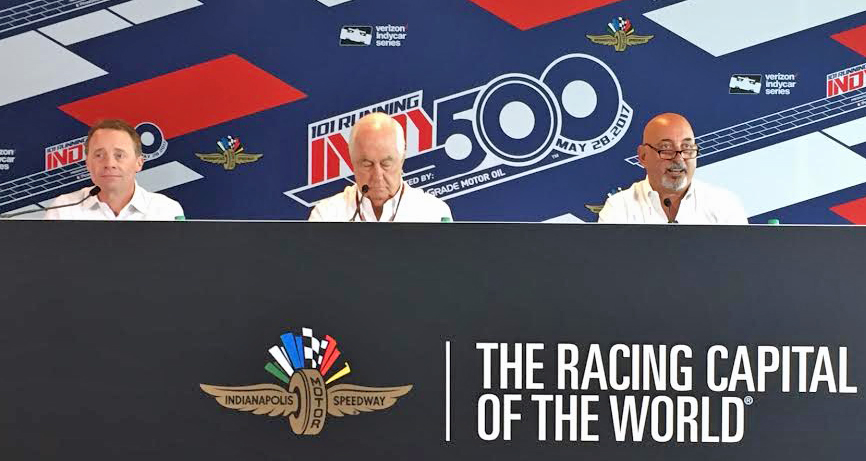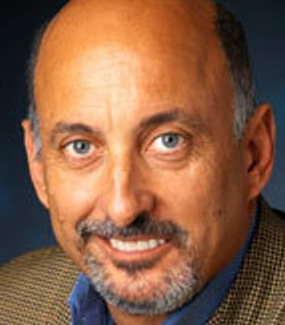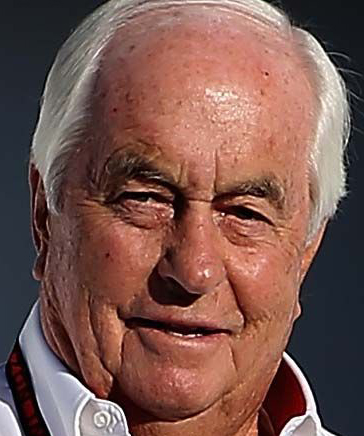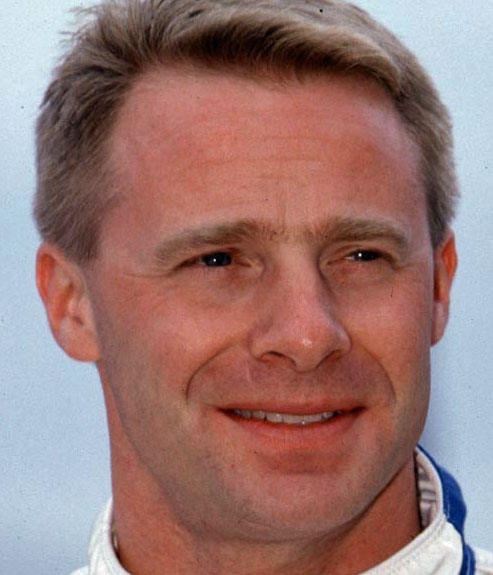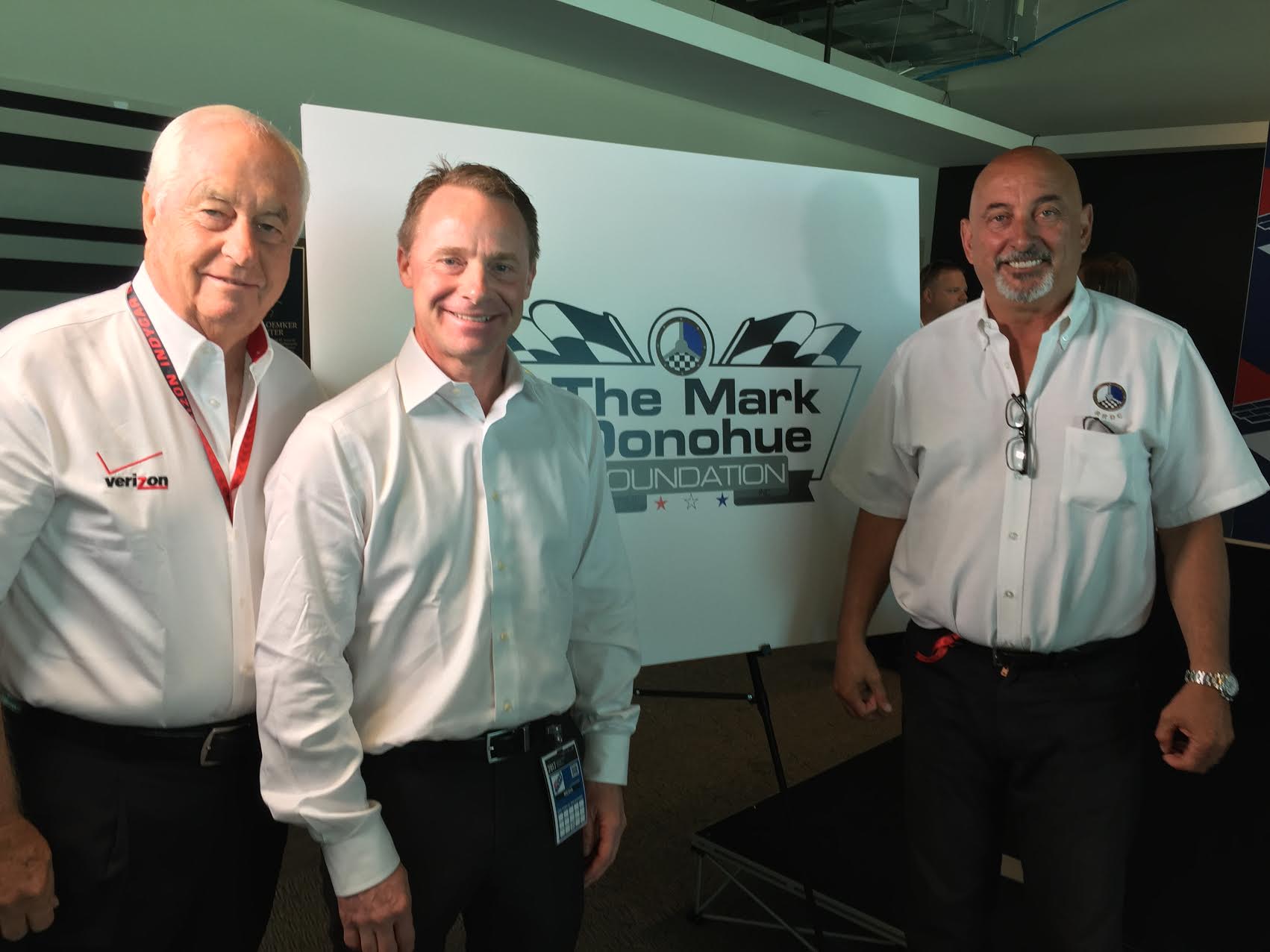RRDC MARK DONOHUE FOUNDATION ANNOUNCEMENT TRANSCRIPT
INDIANAPOLIS, IN, May 18, 2017 – 2017 Indianapolis 500 presented by PennGrade Motor Oil Press Conference transcript of the RRDC Mark Donohue Foundation Announcement with Roger Penske, Bobby Rahal and David Donohue [click here for the video]:
MODERATOR: Ladies and gentlemen, back with another press conference with RRDC, the Mark Donohue Foundation, a pretty distinctive and distinguished group of individuals with us. I think we’re going to begin by turning it over to Bobby Rahal.
BOBBY RAHAL: Good morning, everyone. Thanks for joining us today. This is a big announcement for us in the Road Racing Drivers Club. As some of you might know, I’m the president of that organization, which was founded in 1954. And I can tell you when I was inducted into the group, I think in 1980 or ‘81, I felt a huge sense of accomplishment because of the people who were the steering wheel symbol, like Mark Donohue and Roger (Penske) and, you know, many others, Jackie Stewart, just about every major racing driver from the ‘50s, ‘60s and ‘70s, and not just U.S.-based drivers, but drivers all over the world. So it was a huge thrill for me to join the club and then years later to be asked by Bob Akin and Brian Redman to take over as president, and I think I’ve been president for about 12 years. Of course, we tried to – a club that was once very vital had kind of fallen into a little bit of laziness over the years. We started having programs like the RRDC dinner at Long Beach, which is now 9 years old, and for those of you who have been to it, I think you would join me in saying that it was a pretty special event this year. Of course, Emerson Fittipaldi was our honoree. Roger has been one of our honorees before, aside from people like Dan Gurney, Parnelli Jones and Mario (Andretti), you name it.One of the challenges we faced over the years was to determine what we really wanted to be. Because in the beginnings, when the club was founded in 1954, it was really dedicated towards driver training and also circuit safety. Of course, circuit safety was co-opted basically by sanctioning bodies as time went on. And driver training — you had people like Skip Barber come in and Bob Bondurant and what have you. But in the ‘50s and ‘60s, it was the Road Racing Drivers Club that did that, and Mark Donohue was probably one of the major proponents of that. He even would give engineering symposiums at the New York Auto Show. We got some paperwork, one of his symposiums, that was pretty interesting to read. Of course, Mark was probably considered the first formally educated engineer race car driver, and probably that accounted for much of his success along with having Roger as his team owner and leader.
One of the situations for us was really what did we want to be when we grew up as a club. And we decided and started the SAFEisFAST program, which I’m sure many of you know about. And these are online tutorials that have now been accessed more than 2 million times by 500,000 drivers around the world. It is pretty amazing the number of countries – 184 countries. People in those countries have accessed the RRDC site to catch up on what was being said by whom on the SAFEisFAST program. We’ve had Formula One drivers, World Champions, IndyCar champions, Indy 500 champions, IndyCar winners, 24-hour Le Mans winners, you name it. The drivers that give their time to help in this great cause has been phenomenal and flattering.
One of our issues for us as a club, however, was to continue to find the funding for SAFEisFAST. In the beginning, the FIA was our major supporter. Later on — Honda has been a great supporter over the last several years. All thanks to T.E. (McHale) and John Mansel for that. But we also needed to formalize the club in the sense of having 501(c)(3) status, which, of course, allows people to deduct any contributions that they might make, or corporations, for that matter. So we were able to achieve that recently, and decided we would have the 501(c)(3) dedicated to the Mark Donohue Foundation. Of course, as I said, Mark was one of the greatest proponents. Any picture you see of Mark Donohue driving a race car, there’s a steering wheel emblem front and center on his helmet. He was really one of the chief proponents of driver training and engineer training, as I said earlier.
I’m really pleased that we have Mark’s son David here, who needs no introduction, and you’ll probably hear from David in a little bit. But we thought it would be tremendous if we could get Roger to become honorary chairman, for obvious reasons, his role in Mark’s career, and I’m really pleased that Roger agreed. Of all the things he’s got going on, probably the last thing he needed was one more thing. But I think based on his love for the club and Mark and racing, in general, he agreed, and I just wanted to thank Roger for that. And, Roger, I’ll turn it over to you.
ROGER PENSKE: Bobby, thanks. There’s no question when we go back, it was what, 45 years ago we won our first race here with Mark. You’re right, he had that emblem on his helmet. Of course, I remember going to those luncheons, I think at the Chowder Club in New York City. We haven’t had many of those. I’m sure we would get more activity if we started those back up again in New York City. That was really an important club. We would go there for lunch, and we never got out of there. I’m not sure that would help racing.
But, no, on a serious note, Mark was a partner of mine and someone who was dedicated to the sport. When we talk about technology, I think he’s looking down today and saying, ‘I told you guys.’ So when you think about, you know, all the things we’re doing with telemetry, the Internet and things that make our sport at the upper level of competition and certainly technology and the ability to have SAFEisFAST and have the opportunity for us to continue this foundation under a 501(c)(3).
Bobby, I would say to you people here don’t realize the time and effort you put into the club, and certainly the dinners and Long Beach are a huge success. We as recipients of many of those awards really appreciate that. I do personally, and it’s certainly was a big thing for me.
We’ve been in this business a long time, and when Bobby asked me if I would become chairman, I said I would. It wasn’t a tough decision at all, because I’d have to say Mark was the one that helped kick the can for me to get going here. We worked together. We came here. They called us the college kids with the brush haircuts and the polished wheels. But today people got polished wheels, and their garages are all fancy. So maybe we started something.
But I guess from a Team Penske perspective, I just want to announce today, Bobby, we’re going to give the Mark Donohue Foundation $100,000 to kick it off just to show we do care about it. From my perspective, keep up the good work. The man sitting on my right knows How important Mark was. His driving career was a byproduct of his dad’s and a fast, fast race driver. So I’m just glad to be here this morning.
RAHAL: Thank you, Roger. What a great surprise, a nice surprise. Thank you very much for your generosity. David.
DAVID DONOHUE: Well, obviously, it’s an incredible honor that my father is further immortalized with the name of the foundation, and what RRDC has done, and I’m kind of taken back. Thank you, Roger, for such a contribution, both monetarily and being the honorary chairman.
But, you know, if you look the SAFEisFAST, I don’t know how many of you have gone online to take a look at them, they’re very well produced. Tom Davey and his crew, and Jim Mullen, who has spearheaded the SAFEisFAST and done a lot of fundraising. There are a lot of people behind the scenes. It’s not just some program that some guys go out with a handheld videocamera and shoot some interviews. It’s really well produced. I know I like to go on there and see what the other guys are thinking. So I’m sure a lot of other drivers are, as well.
And the RRDC also has the Mark Donohue Award, which is geared toward the SCCA Runoffs in honoring a driver that embodies the sportsmanship and drive talent and everything during the Runoffs. So I’m particularly proud. I didn’t get to know my father very well because he passed away when I was young, but racing has really given him back to me, because so many people are still around. And it just further continues to be an honor to be his son. I really appreciate it. I’m really looking forward to helping the foundation and seeing what it can do.
RAHAL: Thanks, Dave. Thanks for taking the time to come all the way to Indiana.
DONOHUE: How could I miss it?
RAHAL: Exactly. I’m really thrilled about this. As David said, there are a number of people that have given their time to produce these vignettes that we see on the SAFEisFAST website. You can, of course, go through RRDC.org to have access to them.
We’re very proud of it at the RRDC because it really has been a way for us to give back to the sport that so many of us have enjoyed the spoils of. So I just want to thank everybody for coming. Once again, I encourage you to check it out, SAFEisFAST, if you haven’t already. It really is pretty amazing. Once again, Roger, thank you so much for your generosity.
PENSKE: Well, I think that Mark meant so much to us. I think with the communication, with the Internet and things that you’re doing, it’s amazing. We’d like to leave an imprint ourselves, and we do that with our arms around Mark in this particular situation. It’s very important to me and our team. Thank you.
RAHAL: Thank you.
MODERATOR: Questions? Suzi is on one side, and I’m here.
Q: I have a couple of questions. First to Bobby. You mentioned in the beginning with, if I understand correctly, that the Road Racing Drivers Club has also members worldwide.
RAHAL: Uh-huh.
Q: I’m curious, do you have any members from Germany?
RAHAL: I haven’t introduced Judy Stropus, who is our queen mother. She’s the one that keeps us all in line. And, of course, Judy worked with Mark and Roger for many, many years.
JUDY STROPUS: And I’ve known David since he was 8 years old. Hans Stuck, Jochen Mass. But if you go to the website, RRDC.org, the members are listed in there.
DONOHUE: It’s sort of hard to memorize all the members.
RAHAL: The club has grown a little bit in the last few years, frankly. You know, people like (Karl) Wendlinger have given their time on the SAFEisFAST. He’s done a couple of our programs. I think Hans Stuck as well, Jackie Stewart. It’s pretty amazing the number of people who have given their time. Like David said, it’s not like somebody just sticks an iPhone in their face and records something. It’s a bit of a production that Jeff Tan and Tom Davey do. And so I would encourage you because all walks of racing life are on that program.
Q: I have another question for the SAFEisFAST program. Do you do any development, and if so, in what kind of areas?
RAHAL: Everybody goes, SAFEisFAST , that’s kind of an odd — how is safe fast? Well, safe is an acronym for Skilled, Assured, Fit and Empowered, and that was a way for us to convey to young people in particular who were in, say, karting or coming up through the ranks, to try to teach them, provide some of the wisdom maybe many of us have learned over the years as to how you get to the top or what it takes, and all the demands that are placed upon you as a driver if you wish to try to get to the top. So it’s constant. It’s everything from learning, you know, apexes and how do you drive a corner in a certain way to your physical fitness to diet to, you know, having the right safety equipment, why is that important? Because sometimes when you’re first starting, you’re just happy to be out there.
So it really reaches all aspects of the motor racing world as a driver. But we get access by a lot more people than just young people trying to get to the top. It’s SCCA racers, it’s 30-year-olds. It’s been pretty amazing. But by going online, we’ve been able to reach out to a huge number of people, and as I say, 184 countries, people within those countries. Afghanistan, Iraq, you’d think is the last place somebody would have any interest, and there they are.
That’s really taken the RRDC and taken it from kind of a small – almost even ‘regional’ might be a big word for it — club to having a worldwide impact, positive impact on the motorsports world.
Q: David, what type of — what are the feelings you get when you see the ‘72 McLaren that won here?
DONOHUE: It’s something that I’ve looked at for — since I was really young and a kid. It was an iconic car, iconic colors for the day. It just brings back memories. I’m kind of used to seeing it now just because I’ve been looking at it for many, many years. But seeing it in real life when you come to the Museum here. Roger has got an example, as well. It’s beautifully restored. I know one thing, I fit in it really well. (Laughter)
Q: But in a lot of ways does that kind of give you the lost connection between you and your father?
DONOHUE: I don’t know that that does as much as my involvement in racing myself has — I don’t know, I sort of say it’s like a puzzle, and no one piece you can tell what the puzzle is. I get all these tiny little stories from everybody who — my dad just happened to put — grabbed this guy as a kid and sit him in the car, and that meant a lot to him, talking to him about going to engineering school or just signing some autographs, all these tiny little stories. You begin to put all these puzzle pieces together to get a much better picture. That’s something I would never have if I didn’t go to racing.
So racing is a very weird circus in that way. You can go away, and the void that you leave gets filled very quickly. When you come back, you come back, and it’s open arms like you never left. People in racing want to give back to the people who are in racing all the time. So it’s been strangely rewarding in a way I never thought racing would be for me personally.
Q: Roger, or either one of you, Bobby, last week in the U.S. 2000, there was a boy 14 years old that finished third. He got disqualified in the first, came back and took third again. How would he benefit from your organization as he progresses?
RAHAL: Well, I think — I would not — I would be surprised if he hadn’t accessed the site to learn, you know, maybe with his parents guiding him. You know, for a 14-year-old kid to go racing, you know, you’re really at the bottom of the curve, aren’t you? There’s a learning curve that goes on and on and on, maybe your entire life as a driver. So as I say, when I started racing, they didn’t have — they had — SCCA had a driver school, but to call that a school probably would be a little — I might be exaggerating just a little bit because you just get in, and as long as you didn’t do anything stupid, they gave you your license. Today, of course, that’s much different. The demands are much different today.
The idea of being a professional when I first started racing, maybe it was a dream, but it wasn’t an expectation. But today kids are being prepared at very young ages. You know, hey, you can make a very good livelihood in driving race cars. Not many do in the overall scheme of things, but it’s possible. And, of course, you know, I think that these young kids, when they’re in karting and they know this is where they want to go, they have a place to go to.
I might add the RRDC has also been supportive of the Team USA (Scholarship) program which sends two young Americans to Europe, to England to the Formula Ford Festival. If you look at – (Josef) Newgarden was one of our drivers there a few years ago. Jimmy Vasser in the beginning. That’s a long, long time ago now, but — Bryan Herta. I mean, you look at the list of the Team USA RRDC drivers that have gone to those two races, Walter Hayes at the Formula Ford Festival and Brands Hatch. It’s really kind of a who’s who in motorsports today.
So I think we’ve always tried to be seen as investing in the future of American racing car drivers, and Team USA is an example of that. Jeremy Shaw has been a big proponent of that, as I’m sure you know. Now with SAFEisFAST that’s kind of completed it. It continues to grow, and for us it’s great because with the Internet. Let’s face it. You can shoot a vignette, you can cancel it, do a new one. It can forever be changing. It’s not the same stuff running over and over. And that’s our commitment.
DONOHUE: If I might add, I kind of think of the SAFEisFAST as a credible reference because it’s free. Kids or people go online, and there’s so much disinformation in the forums, and some guy might be fast for all the wrong reasons or whatever, and who can you believe? If you can’t believe an Indy 500 winner or Formula One champion or someone like that that’s being properly interviewed, then you’re on your own anyway. Like Bobby said, it’s anything from fitness to engineering insights to even how to crash properly. It’s everything. So there’s a lot of helpful information there.
MODERATOR: Roger, I was just thinking about your quest for number 17 and how much of it started, first of all, with your own experience as a championship driver. But the development from Mark out on the skid pad for hours and hours and hours, it’s progressed a lot, hasn’t it?
PENSKE: I remember when we went to Sun Oil down in Philadelphia and said we wanted to build a skid pad at their refinery. It was right on the flight path of the Philadelphia Airport, and we forged a skid pad not knowing what we were doing, but we found out quickly it was a real asset. Then, of course, the Black Lake was built at General Motors proving ground where they had the skid pad. But he was always on a leading edge. I think about air jacks, I think about our Camaros. We ran those when we had the 40-foot high fueling rigs. Just a couple ideas that came out of Mark’s pocketbook, but we had some fun.
MODERATOR: Other questions for our group?
Q: Question to you, David. Did you ever drive one of the original cars of your father, historic cars? I mean, Roger still has the PC1, the 917/30 at the Porsche Museum in Stuttgart. Did you ever try one of those cars?
DONOHUE: I tried both of those, actually. I can proudly say that I’m the only person to drive a Formula One car for Roger at Indy. It happened to be a PC1 for a couple of demonstration laps. And I drove the 917/30 as well. I have driven, I think the 1970 IndyCar. That was when it was restored. I drove that up the driveway at Goodwood, and also the Lightweight Trans Am car.
Q: Where did you drive the 917?
DONOHUE: Laguna Seca, it was a Porsche Museum’s car. Of course, many of you might know that the second car that ran most of the race was just recently restored to brand-new condition.
PENSKE: Rob Kauffman has that … just beautiful.
Q: (Inaudible – off mic)
DONOHUE: Some records need to stay. (Laughter)
Q: (Inaudible – off mic)
DONOHUE: Right, in 2005 I did some speed records in a Porsche Carrera GT at Talladega, which was to be an anniversary. But the record was beaten, I think, by Mauricio Gugelmin at Michigan. I don’t know who else has, but it has been superseded.
MODERATOR: We were just discussing the fact we’re going to have an opportunity, if there are no more questions, for a photo op with the sign.

